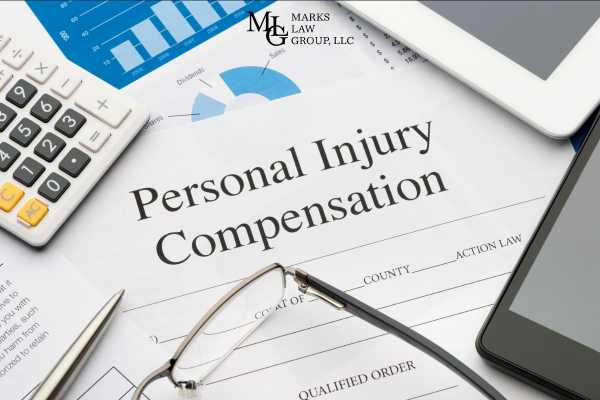Understanding pain and suffering in the context of a personal injury case is essential for anyone who has experienced harm due to another's negligence. Unlike tangible losses such as medical bills or lost wages, pain and suffering encompass the physical discomfort and emotional distress a victim endures as a result of their injuries. This non-economic damage is subjective and varies widely from case to case, making it one of the most complex components to quantify in personal injury claims.
Navigating the intricacies of pain and suffering claims requires a nuanced understanding of both the legal landscape and the specifics of your individual experience. This is where the help of an experienced Decatur injury attorney becomes invaluable. If you or someone you know is struggling to cope with the aftermath of an injury and unsure how to proceed with claiming compensation for pain and suffering, we are here to help.
Contact our law firm today at (678) 251-9309 to discuss your case with a knowledgeable attorney who can guide you through the process, ensuring that your pain and suffering are thoroughly documented and rightfully compensated. Let our Decatur injury lawyers advocate for your well-being and help secure the compensation you deserve.
What is Pain and Suffering?
Pain and suffering in an injury claim refers to the physical and emotional distress experienced by a victim due to their injuries. It encompasses various aspects of the victim's suffering, including:
- Physical pain: This includes the actual physical discomfort and anguish caused by the injuries sustained. It may involve ongoing pain, discomfort from medical treatments, and limitations in mobility or function.
- Emotional distress: Beyond physical pain, individuals often experience emotional trauma as a result of their injuries. This can include anxiety, depression, fear, frustration, and other negative emotions stemming from the accident and its aftermath.
- Loss of enjoyment of life: Serious injuries can significantly impact a person's ability to engage in activities they once enjoyed. This loss of enjoyment of life refers to the diminished ability to participate in hobbies, social activities, and other aspects of daily life due to the injuries.
- Mental anguish: Victims may also suffer from mental anguish, which can manifest as psychological trauma, PTSD, sleep disturbances, and other mental health issues resulting from the accident and injuries.
In a personal injury claim, compensation for pain and suffering aims to address these intangible damages that go beyond medical bills and lost wages. It seeks to provide financial relief for the emotional and psychological toll inflicted by the accident, allowing victims to recover and move forward with their lives
Types of Damages in a Personal Injury Case
In a personal injury case, various types of damages may be awarded to compensate the injured party for their losses. These damages can be categorized into two main types: economic and non-economic damages.
Economic Damages
Economic damages have a specific easily measured monetary value and include things like:
- Medical expenses: This includes costs associated with medical treatment, hospitalization, surgery, medication, therapy, and rehabilitation.
- Lost wages: Compensation for income lost due to the injury, including wages, salary, bonuses, and other forms of income that the victim would have earned if not for the injury.
- Property damage: Reimbursement for damage to the victim's property, such as a vehicle in a car accident or personal belongings.

Non-Economic Damages
Non-economic damages do not have a set value and cover other losses:
- Pain and suffering: Compensation for the physical and emotional distress experienced as a result of the injury, including physical pain, emotional trauma, and mental anguish.
- Loss of enjoyment of life: Damages awarded for the loss of ability to engage in activities and experiences that were once enjoyed before the injury.
- Loss of consortium: Compensation for the negative impact the injury has on the victim's relationships with their spouse or family members.
- Punitive damages: In cases of extreme negligence or intentional harm, punitive damages may be awarded to punish the wrongdoer and deter similar conduct in the future.
These types of damages aim to fairly compensate the injured party for their losses and help them recover physically, emotionally, and financially from the effects of the injury. The specific types and amounts of damages awarded in a personal injury case depend on the circumstances of the case, the severity of the injury, and applicable laws.
How Do You Prove Pain and Suffering in an Injury Claim?
Proving pain and suffering in an injury claim involves demonstrating both the physical and emotional impact of an injury. Unlike tangible damages such as medical bills or lost wages, pain and suffering are subjective and can be more challenging to quantify. Here’s how you can effectively establish and prove these non-economic damages in your claim:
- Medical Documentation: The cornerstone of proving pain and suffering is comprehensive medical evidence. This includes medical records, doctor’s notes, diagnoses, and treatment plans that detail the injuries suffered and their repercussions. It's crucial to show a direct link between the incident and the injuries claimed.
- Expert Testimony: Often, medical experts can testify about the expected longevity and severity of your injuries. Their professional assessments can lend significant credibility to claims of pain and suffering, explaining how the injuries impact daily activities and quality of life.
- Personal Documentation: Keeping a daily journal or diary documenting your pain levels, emotional states, and how the injuries affect your daily life can be persuasive. Detailing struggles, limitations on activities, and the emotional toll can help paint a vivid picture of your suffering.
- Witness Testimony: Statements from family, friends, or coworkers who can discuss how your life has changed post-injury can support your claims. They can offer observations about your pain, difficulties with normal activities, and changes in mood or behavior.
- Photographic and Video Evidence: Visual evidence of your injuries and how they have impacted your life can be powerful. This might include photos or videos showing the severity of the injuries or documenting your rehabilitation process.
- Impact on Quality of Life: Evidence showing changes in lifestyle, including activities you can no longer enjoy, social interactions, and hobbies you've had to give up due to the injury, can also be used to prove pain and suffering.
In presenting these elements, it's important to construct a narrative that clearly connects the dots between the incident, your injuries, and how they have led to physical pain and emotional suffering. Given the complexities involved in proving pain and suffering, consulting with a personal injury attorney can provide you with the necessary expertise to effectively manage and present your case. An attorney can help in gathering the appropriate documentation, securing expert testimony, and crafting a compelling argument to ensure that you receive the compensation you deserve.
How is the Value of Pain and Suffering Calculated in a Georgia Injury Claim?
In Georgia, the amount of compensation you can receive for pain and suffering in a personal injury claim is not capped for most types of injuries. This means the potential compensation can vary significantly, depending largely on the specific circumstances of the case.
The determination of pain and suffering compensation in Georgia typically involves considering the severity of the injury, the level of pain experienced, and how the injury affects the individual's daily life, including their ability to work and enjoy life activities they previously engaged in. For instance, chronic pain, severe discomfort, emotional distress, and the loss of enjoyment of life are all factors that can increase the amount awarded.
In cases involving medical malpractice, however, Georgia does have a cap on noneconomic damages (which include pain and suffering) that was set at $350,000 per provider and $1.05 million overall. It is important to note, though, that in 2010, the Georgia Supreme Court declared the cap on noneconomic damages in medical malpractice cases to be unconstitutional, effectively removing these limits.

For calculating pain and suffering damages, attorneys and insurance companies often use the "multiplier method," where actual damages (like medical bills and lost wages) are multiplied by a number typically between 1 and 5, depending on the injury severity. Alternatively, a "per diem" method might be used, assigning a daily amount to pain and suffering and multiplying this by the number of days the injured person is expected to suffer or has suffered due to their injury.
Given the subjective nature of pain and suffering assessments and the significant variability in potential awards, having a knowledgeable personal injury attorney can be crucial. An experienced attorney can help document the impacts of the injury effectively, negotiate with insurance companies, and advocate in court, if necessary, to ensure that the compensation reflects the true extent of the pain and suffering endured.
Marks Law Group is Here to Help With Your Injury Claim
Understanding how pain and suffering are evaluated in personal injury cases is crucial for anyone who has experienced significant distress following an accident. This component of a claim reflects the emotional and physical hardships that don't always come with a clear price tag but profoundly affect one’s quality of life. Accurately quantifying pain and suffering is complex and requires a comprehensive approach to ensure that all aspects of the victim's hardships are considered. This is where professional legal help becomes indispensable.
If you or a loved one has suffered an injury due to someone else's negligence, don't face the challenge of negotiating your pain and suffering compensation alone. Contact our experienced personal injury lawyers who can guide you through the process of documenting your injuries, calculating an appropriate amount for pain and suffering, and advocating for your right to full and fair compensation. Let us help you secure the justice and recovery you deserve. Reach out to us today to schedule a consultation and take the first step toward healing and restitution.
